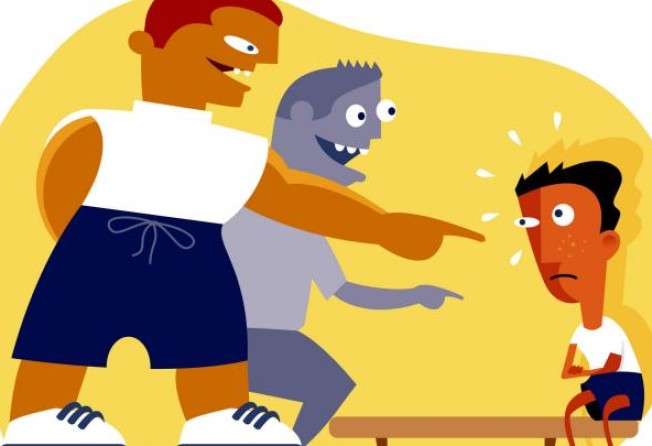How to grab the bully by the horns

Young children's friends are the people they play with most. These children become familiar and predictable. Later, by four years of age, children start to select friends who match their developmental skills, their activity levels and their temperament. This is the beginning of true reciprocal friendship.
But at the start of middle childhood, children's choices of friends are modified by group pressures. In a way, it's like the stock exchange: it's safe to invest in friends who will raise your status within the group, and risky to associate with peers the group does not respect.
This can break the hearts of six- and seven-year-olds whose close friends now abandon them. In one scenario, two children are best friends when alone, but then one shuns the other at school, where others are looking.
This age is also when bullying begins. Bullying has two faces: it can consist of direct attacks such as pushing, shoving, tripping someone up, stealing someone's possessions and taunting. This form is more common in boys through the primary school years.
Girls typically use less direct methods. They try to control others by putting conditions on a friendship, or restricting access to social events such as birthday parties. Some children seek to dominate a peer by dictating that the peer play only with them. Other tactics include talking behind people's backs, spreading rumours, and, these days, harassing them on social networking sites. These methods allow perpetrators to disguise their aggressive intentions.
There are three differences between bullying and aggression. The first is that bullying is systematic - repeated targeting of a child whom the group sees as weak. Aggression targets whoever is nearby.
The second difference is that bullying increases with age. Most bullies are socially skilled and can manipulate others into doing their bidding. They have high self-esteem because they value power.
Bullying works for them by securing dominance and influence, and it works for groups by cementing the "in" group status by excluding the "out" group members.
Aggression in the school years is less common. Aggression peaks between ages two and three-and-a-half and declines after that - as long as adults do not punish children for being aggressive, because this teaches them that power wins.
The third difference between aggression and bullying is that, when aggressors see that their victim is hurt, they pull back. But when bullies see that their victim is hurt, they bully even more. This is why we should not teach victims to say, "Stop it. I don't like it." Running to an adult for help only confirms the belief that the victim is defenceless which, again, escalates the bullying.
So what can adults do to help children socially? A child's social world is more complex than adults can grasp. So except in emergencies, adults should not intervene.
Teach young children how to enter groups without asking to play. Asking hardly ever works. Much more successful is hovering near the group and waiting for an opening, and then joining in.
Adults should also listen. When bullying is ongoing, ask, "I'm getting concerned. Do I need to be?" If the child answers yes, move in to help.
Finally, look for solutions, not a culprit. For bullying in schools, a teacher can gather together two of the victim's friends, a couple of perpetrators, and an onlooker or two, and gain each member's commitment to supporting the ostracised child. In this way, perpetrators do not have to admit their role, are less likely to retaliate for being tattled on, but feel obliged to desist or even actively help.
Dr Louise Porter, a child psychologist, is the author of Children Are People Too